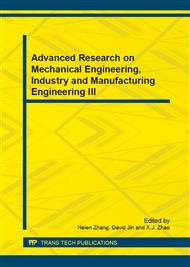p.325
p.331
p.336
p.341
p.345
p.349
p.355
p.359
p.364
Flow-Induced Noise Radiation from the Rotational Bodies Based on Fluid Mechanics Using Hybrid Immersed Boundary Lattice-Boltzmann/FW-H Method
Abstract:
A novel study of the simulations of the flow-induced noise from the moving boundary objects using the hybrid immersed boundary lattice-Boltzmann method (IB-LBM), which is the modern useful numerical method of fluid mechanics, on the Ffowcs Williams-Hawkings (FW-H) equation is carried out. The permeable surface FW-H method has been demonstrated an effective technique of the far-field noise predication, because of its complete theories and successful applications in aeroacoustics. It usually need the information of the field near sound source. Therefore, we also adopt the effective and widely used IB-LBM to treat the interaction of the moving boundaries and the fluid, in order to simulate the near-field accurately. Some simulations are shown to test the hybrid method, including the rotational cylinder. The results prove that the hybrid IB-LBM/FW-H method can simulate the large field problems of the flow-induced noise effectively and accurately.
Info:
Periodical:
Pages:
345-348
Citation:
Online since:
August 2013
Authors:
Price:
Сopyright:
© 2013 Trans Tech Publications Ltd. All Rights Reserved
Share:
Citation:


